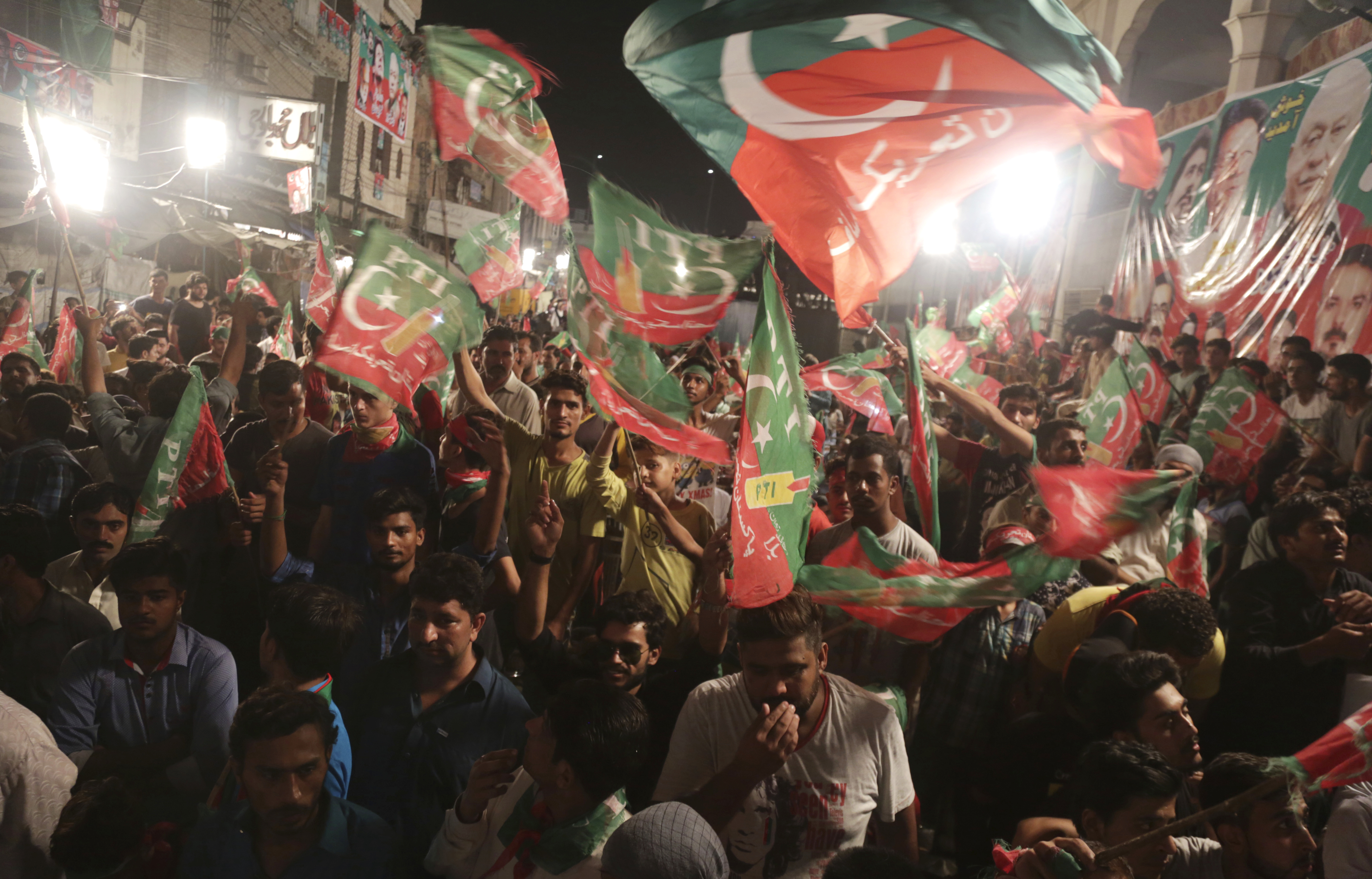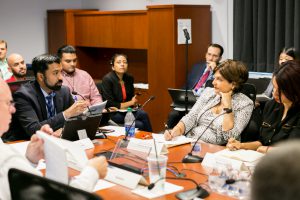Pakistan and Information Warfare

Pakistan recently saw a political upheaval with the election of cricketer-turned-politician, Imran Khan’s party rise to power. PTI or Pakistan Tehreek-e-Insaf’s win is exceptional not only because of its charismatic leader, but mainly because it is the first time in decades that the alternating governments between Bhutto’s party and Sharif’s party have been sidelined. Khan is being hailed (and claimed by some to have been instated) by the military as the leader the country has been waiting for since its founder, Mr. Jinnah. With elaborate military ceremonies in honor of the new Prime Minister and cheering uniformed officers, Pakistan has indeed entered a new era – or has it?
On September 26, USAGM hosted a panel of experts to discuss the potential opportunities and pitfalls that lie ahead as the United States negotiates a souring relationship in a new diplomatic atmosphere. While television, with its uber-popular current affairs show hosts, remains a central means of consuming news and information in Pakistan, the panelists highlighted new actors whose growing influence in the country is increasingly relevant to media organizations.
Pakistanis aged 15-24 account for about 65 percent of the country’s entire population –the largest youth population in Pakistan’s history. And where television and radio are popular ways to reach audiences, cell phone use in Pakistan is skyrocketing – with 125.9 million cellular phone users, and young people over-indexing as cell phone users. They actively use the internet and digital media to get news and information and engage in conversations about national, social and local issues via social media.
USAGM’s strategy for Pakistan is to tap into the youth population through innovative multimedia programming. With a “Digital First” strategy, USAGM has seen increased engagement with its digital content specifically catering to this growing population. USAGM networks have a reported weekly growth of 14 percent on Facebook, 63 percent on Twitter, 80 percent on Instagram and a total of 350 million video views over the last year in Pakistan. Content traditionally associated with radio or television broadcasting is being integrated and appropriated for digital platforms, also resulting in the launch of mobile apps and WhatsApp strategies targeting mobile users. Targeted Facebook Live broadcasts with social media influencers have been enormously popular, with regular radio livecasts with veteran Pakistani broadcasters also being presented on Facebook and Twitter.
It’s important to note that USAGM is not alone. China’s investment of over $60 billion in the China-Pakistan Economic Corridor – a flagship project of its transnational Belt and Road initiative, comes with an increase in its soft power. Chinese news and language programs are regularly broadcast in Pakistani cities; Chinese language has been introduced as part of the curricula in prestigious colleges and schools and is becoming compulsory for future career prospects, as economic exchange between the two countries grows. Chinese hashtags, local commercials featuring Chinese migrants, and even romance films featuring Chinese protagonists are more common in Pakistan’s media market in the last two years. Chinese political influence in the country has gone from imminent to palpable.
A pivot towards China in Pakistan’s foreign policy is coupled with modeled behavior, including recent suppression of journalists, and right before the 2018 elections. Though Pakistan has never had a stellar free press record, recent arrest warrants for famous journalists and curtailing of distribution of DAWN news (a prestigious English language newspaper) are new. As one panelist pointed out, the new government has remained silent on these attacks on press freedom.
USAGM’s own prime-time TV show was briefly canceled in the days leading up to the elections. Its journalists reporting from FATA for VOA Deewa and RFE/RL’s Radio Mashaal continue to face a threatening atmosphere. In 2017 alone, at least four Radio Mashaal journalists have been threatened, stalked, kidnapped for up to 72 hours, shot at, or otherwise harassed, both by the Taliban and by Pakistani intelligence agency officials. In January 2018, Pakistan’s Interior Ministry shut down Radio Mashaal’s offices in Islamabad, on orders from the country’s secret service agency, the ISI.
We know that USAGM’s objective to give voice to marginalized communities and minorities represents a threat to some forces. A special focus of USAGM reporting includes topics and news generally not covered on Pakistan’s mainstream media and this does not always sit well with military censorship. Social media has been extremely useful to this strategy as well, since scoops prohibited from airing on affiliate networks can be covered with a simple cell phone set up and an intimate Facebook Live chat. This year alone, USAGM has featured Pashtun movement leaders, personalities dissenting against Khan’s uncountable trolls, transgender entrepreneurs and minority activists on its digital platforms.
If these changes weren’t enough, extremist groups in Pakistan are actively using social media to target a large youth population facing limited economic opportunities. To lessen the influence of extremist or anti-democratic groups, particularly those exposing anti-American sentiments, USAGM is developing counter-narratives through its original programming. Since 1952, USAGM has fought this with varied programming including stories highlighting the successes and lives of immigrant Pakistanis living in the United States. Examples are many and point Pakistani youth toward possibilities of entrepreneurship, higher education and tolerance as a possibility of living in a diverse social world.
USAGM’s mission is more critical than ever and our networks are becoming more agile in the face of new challenges in the Pakistan media and information space.

